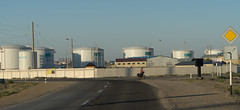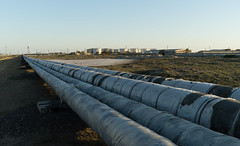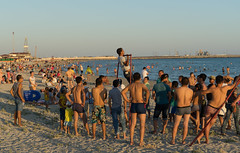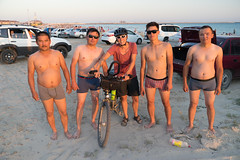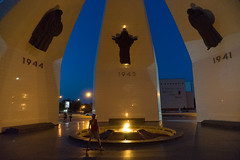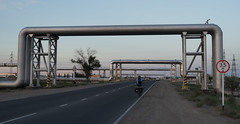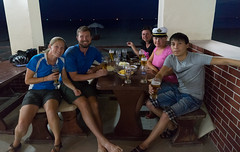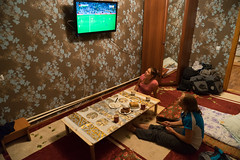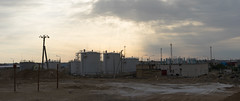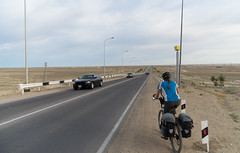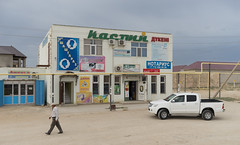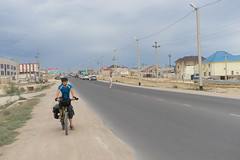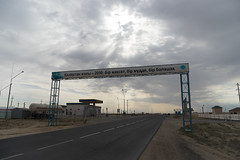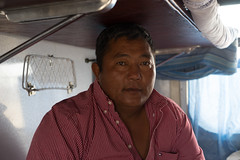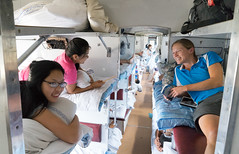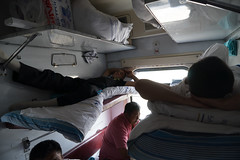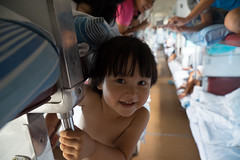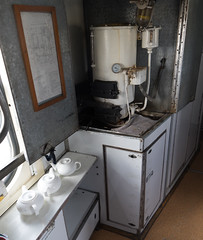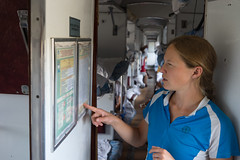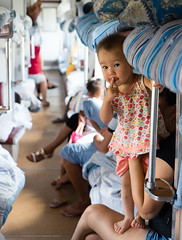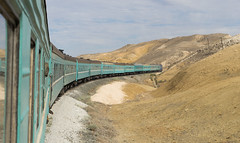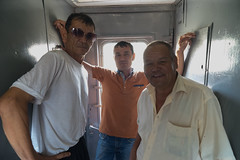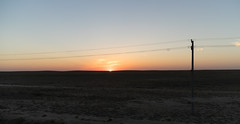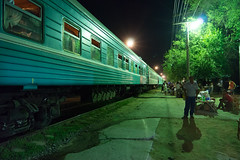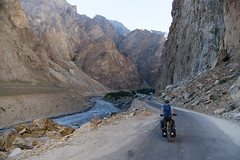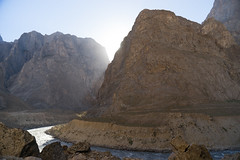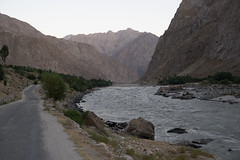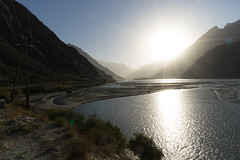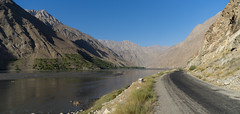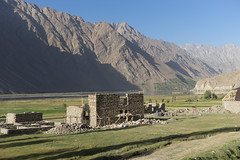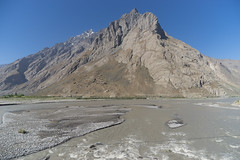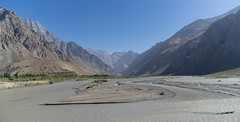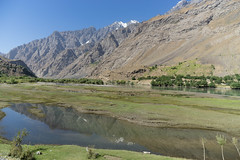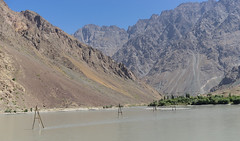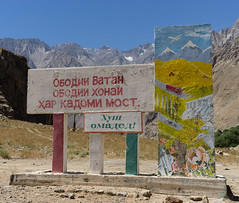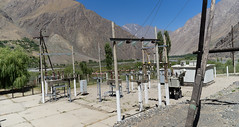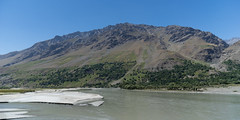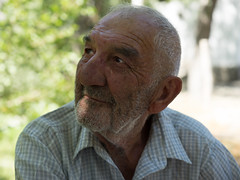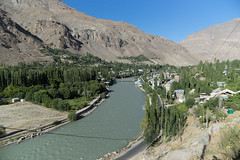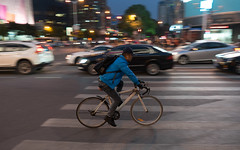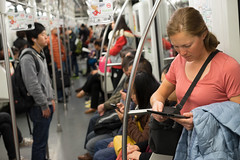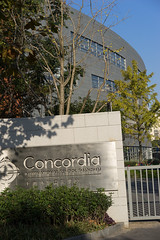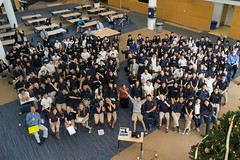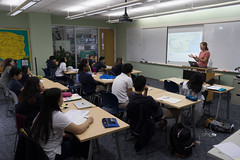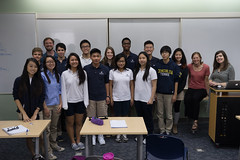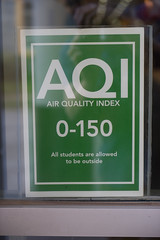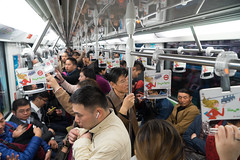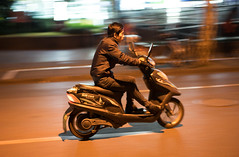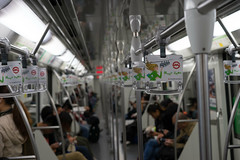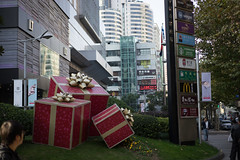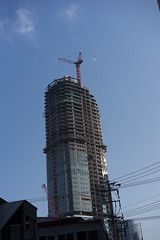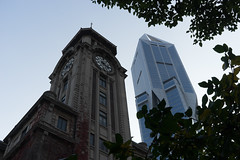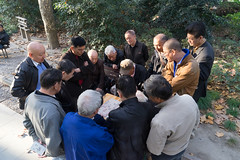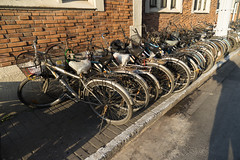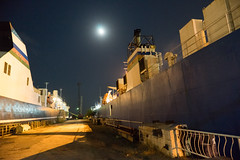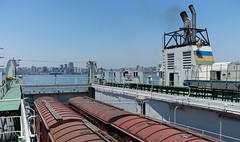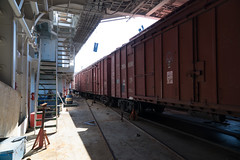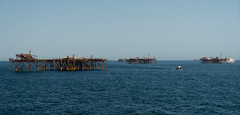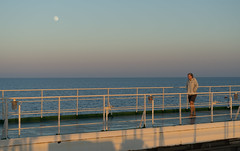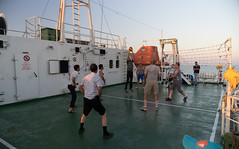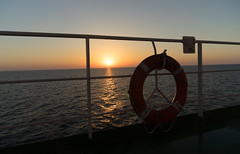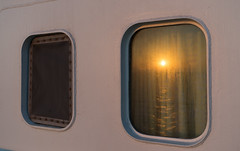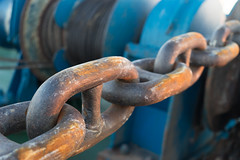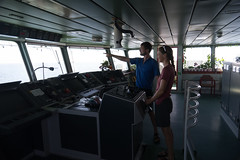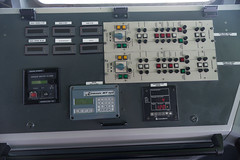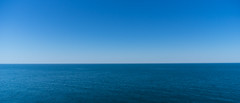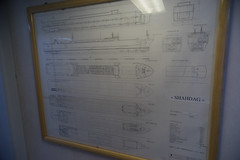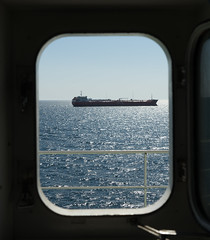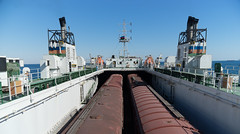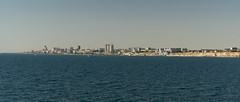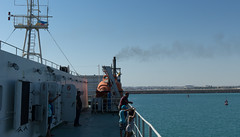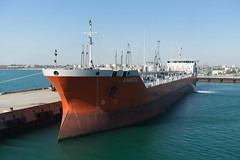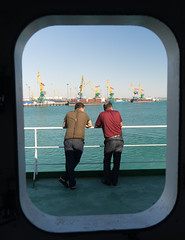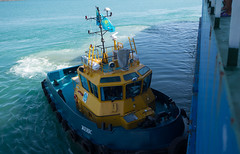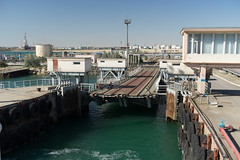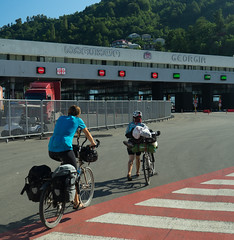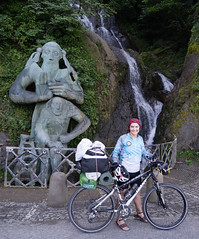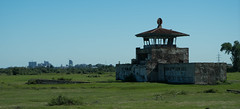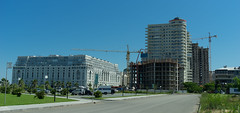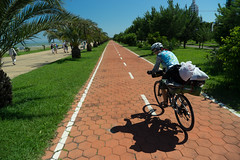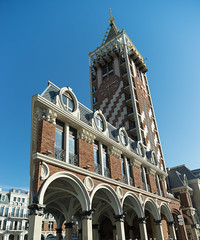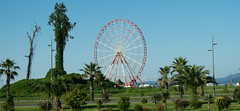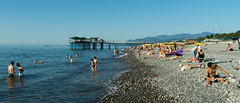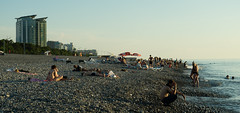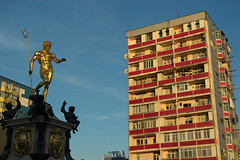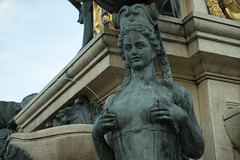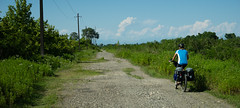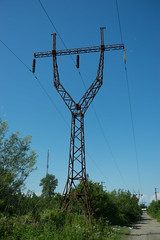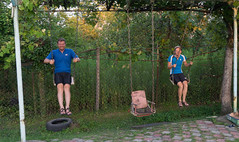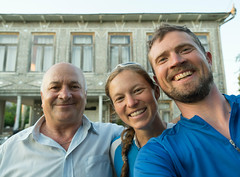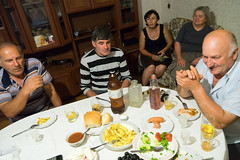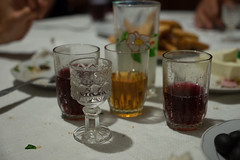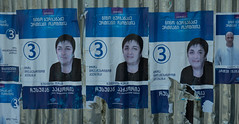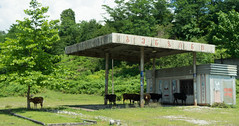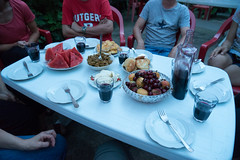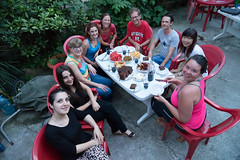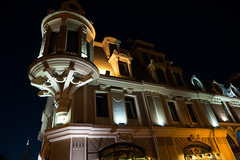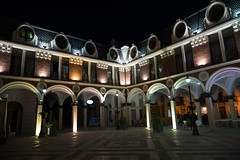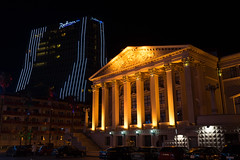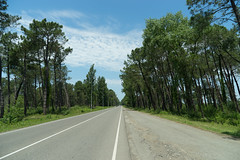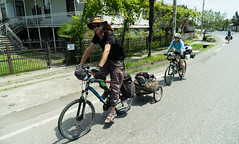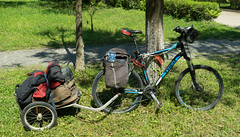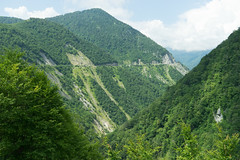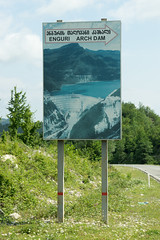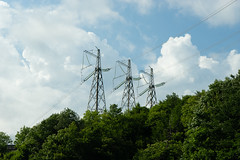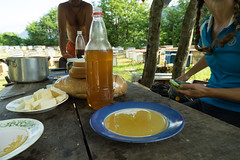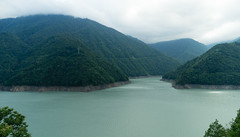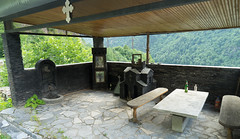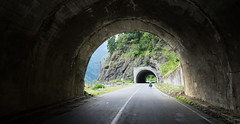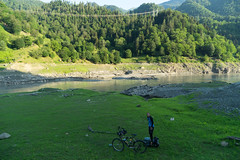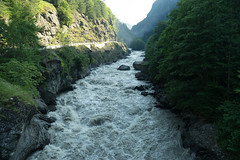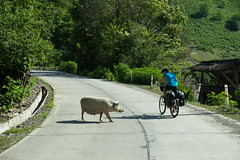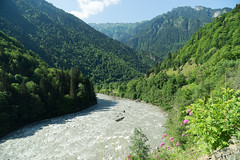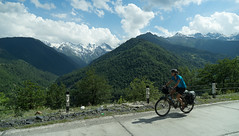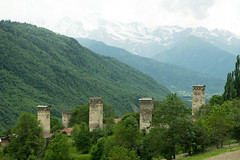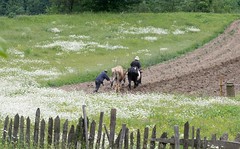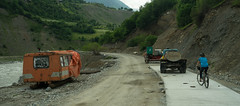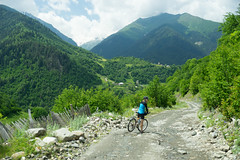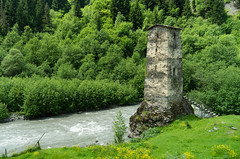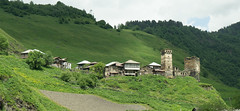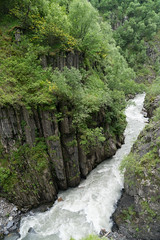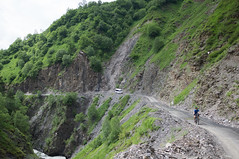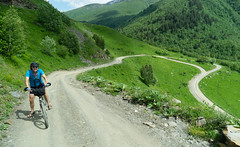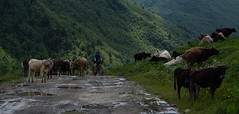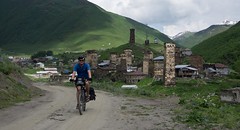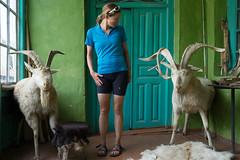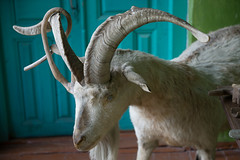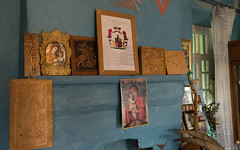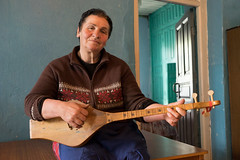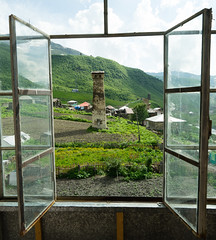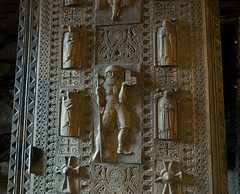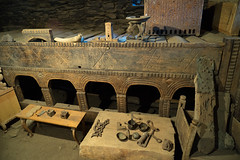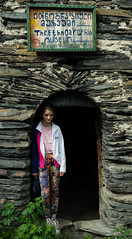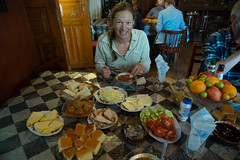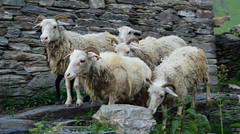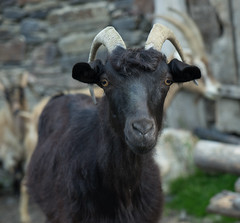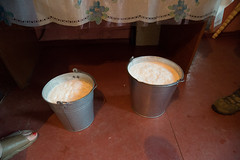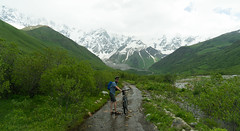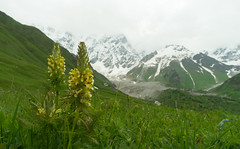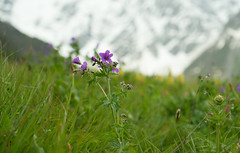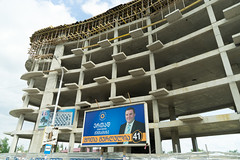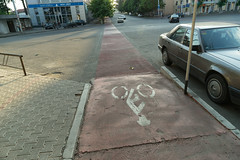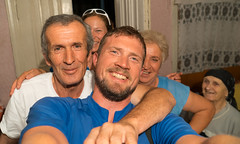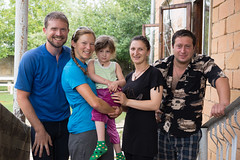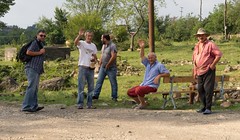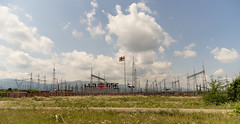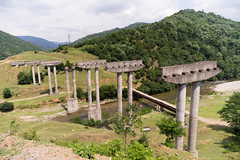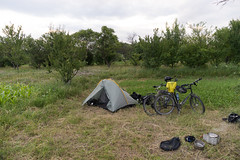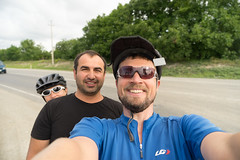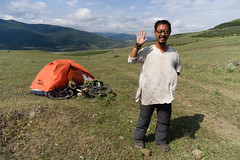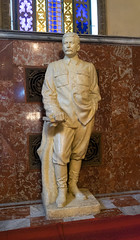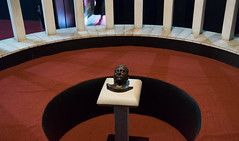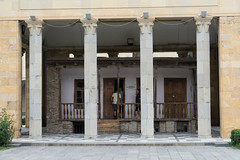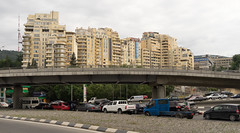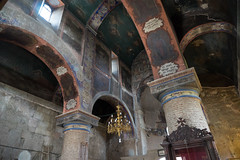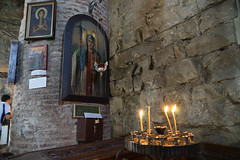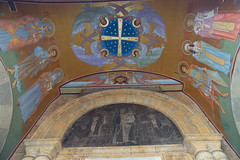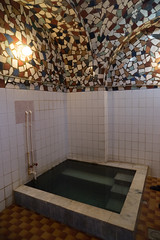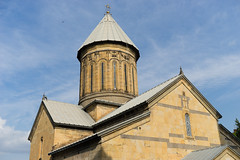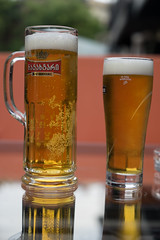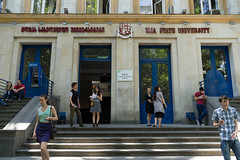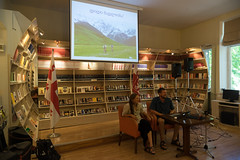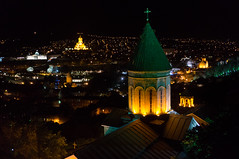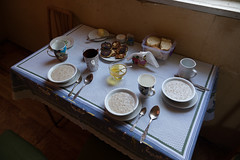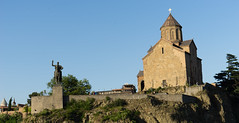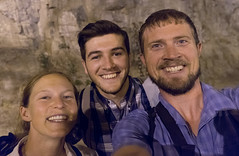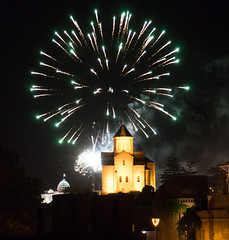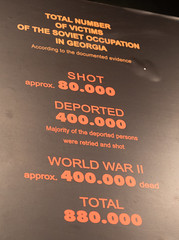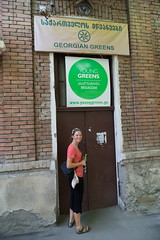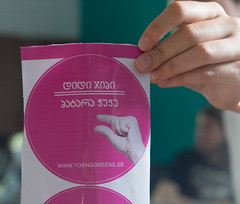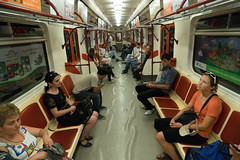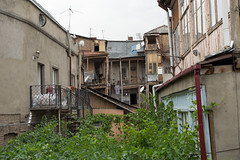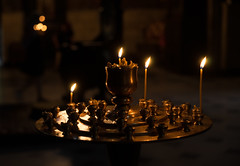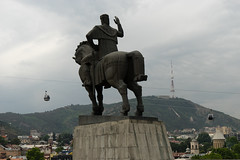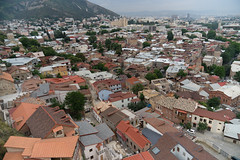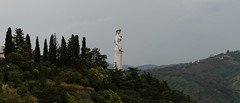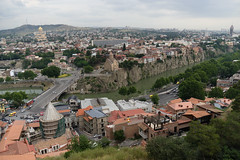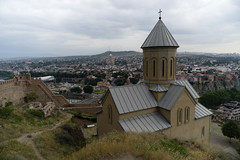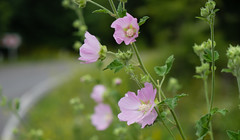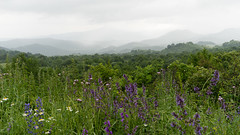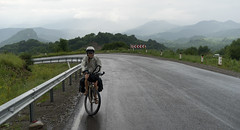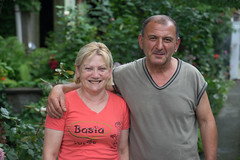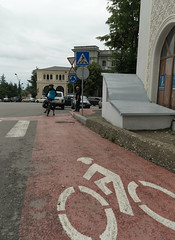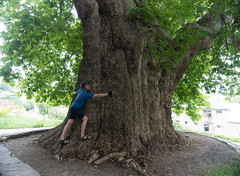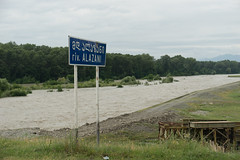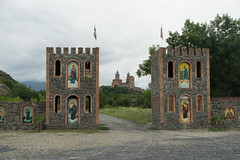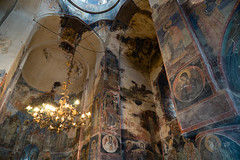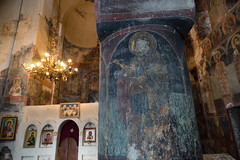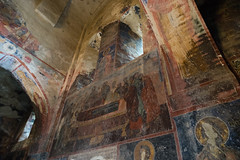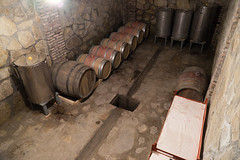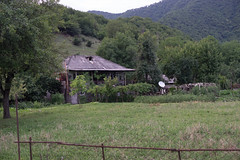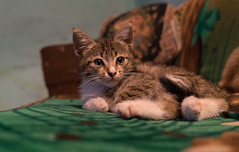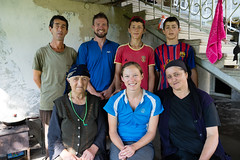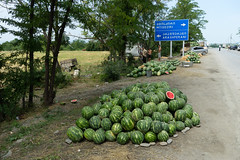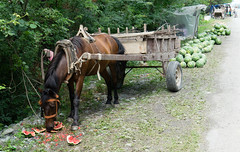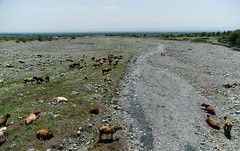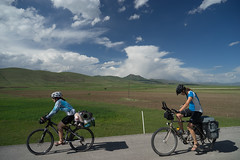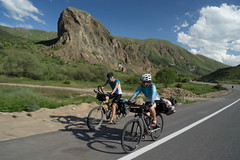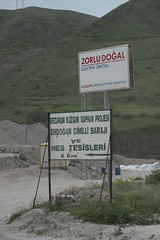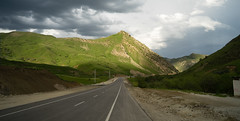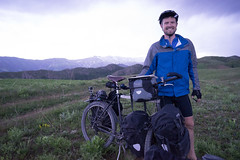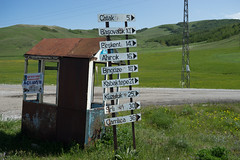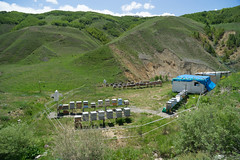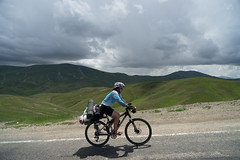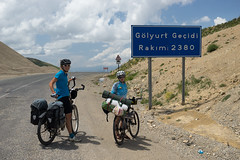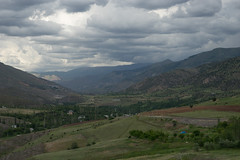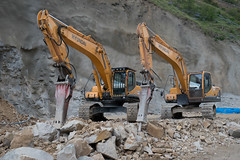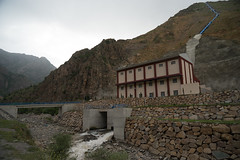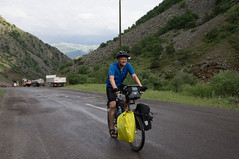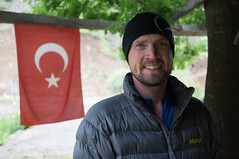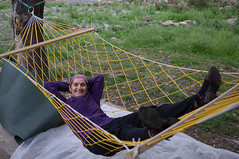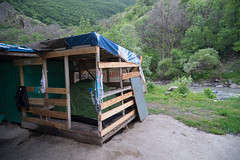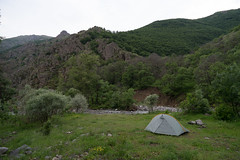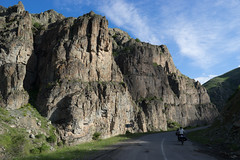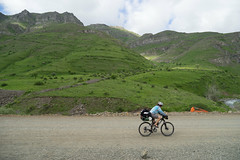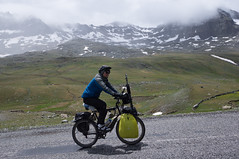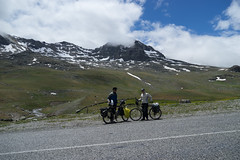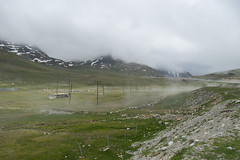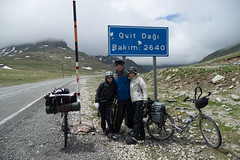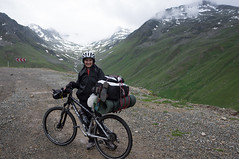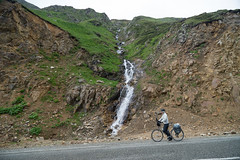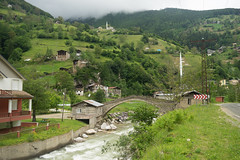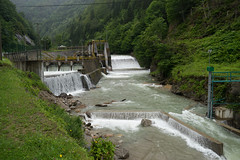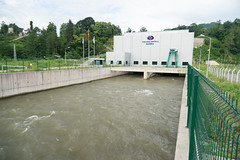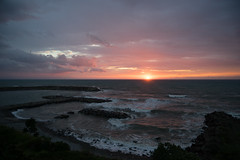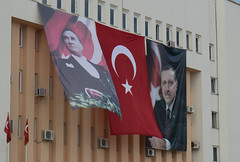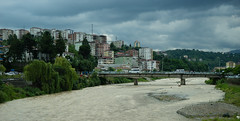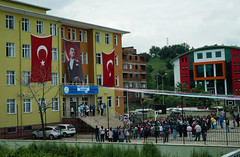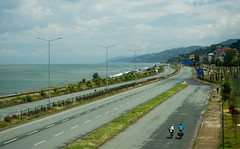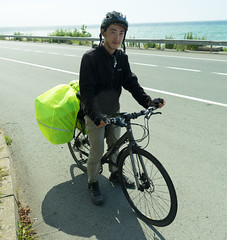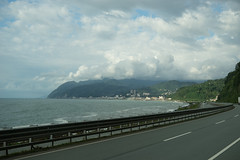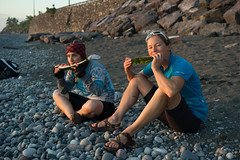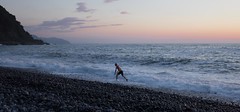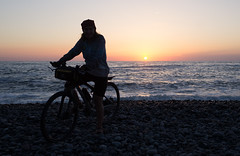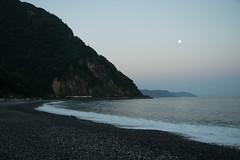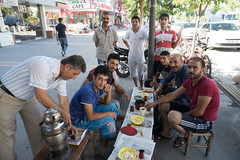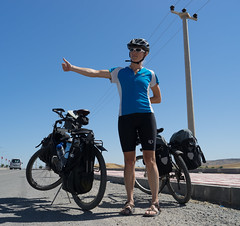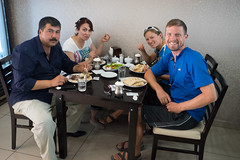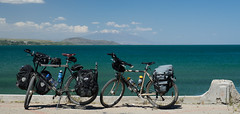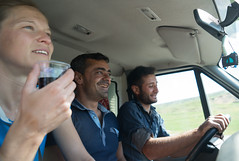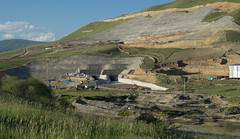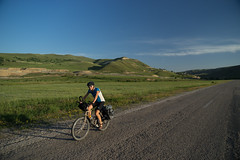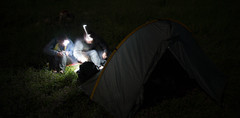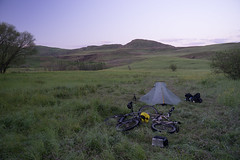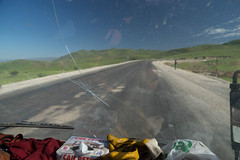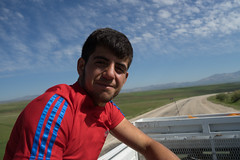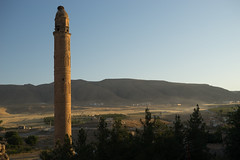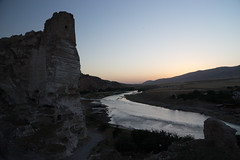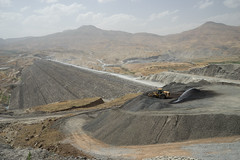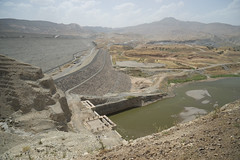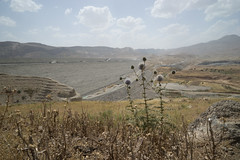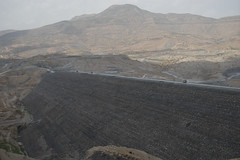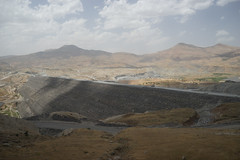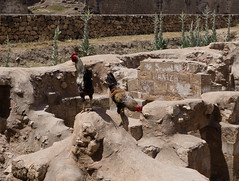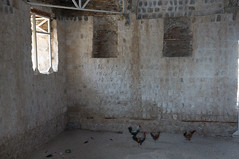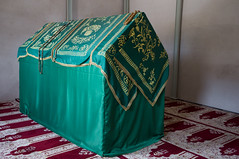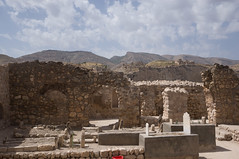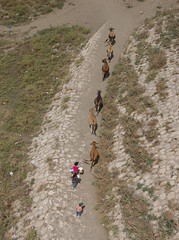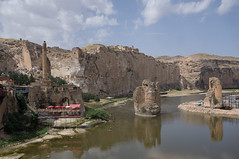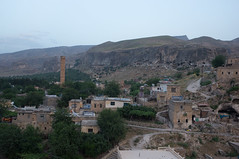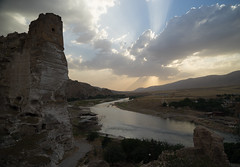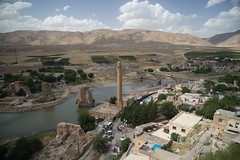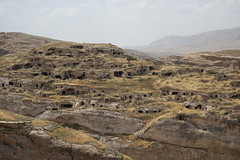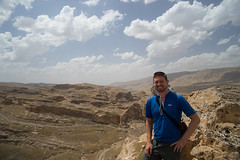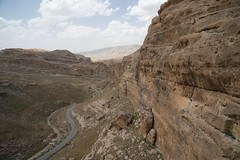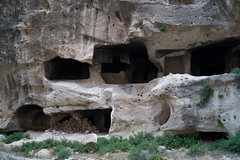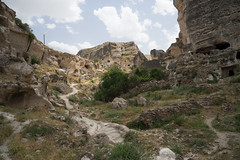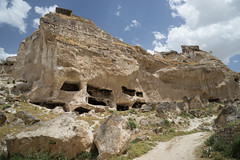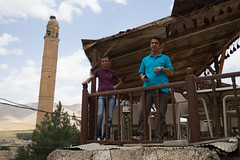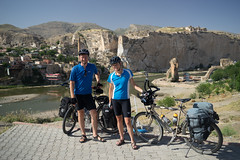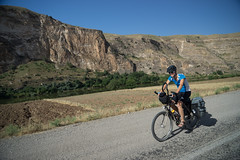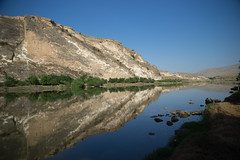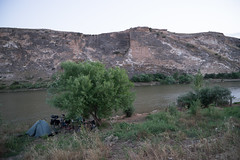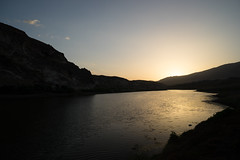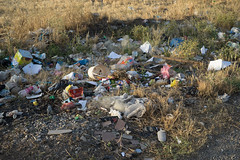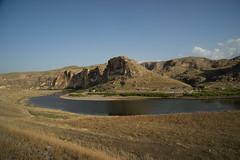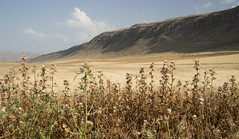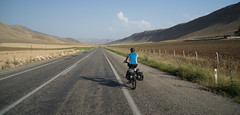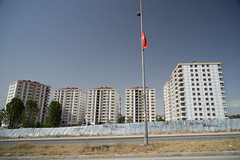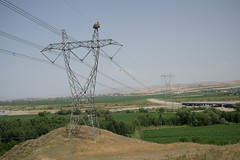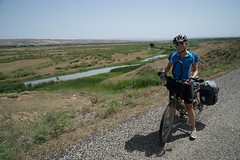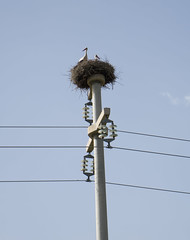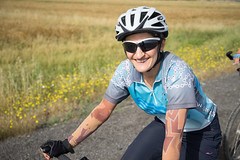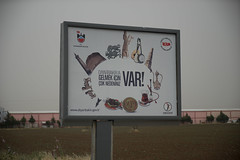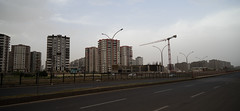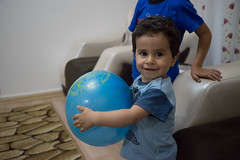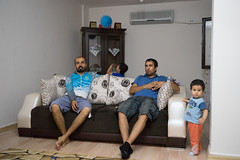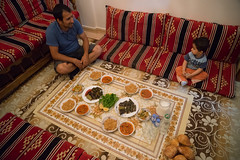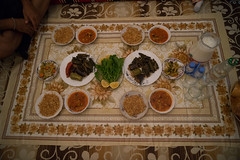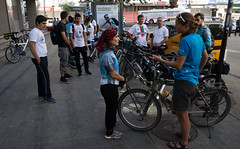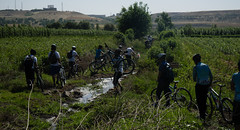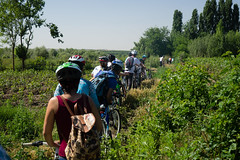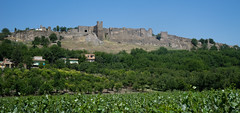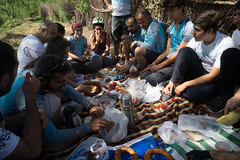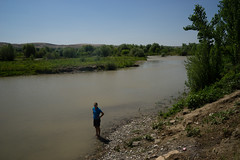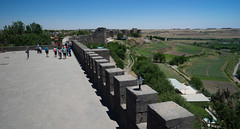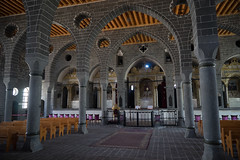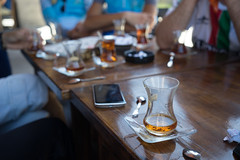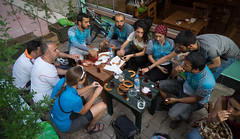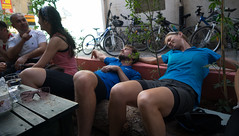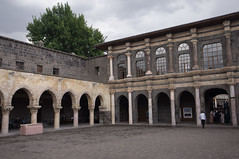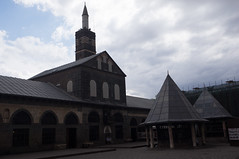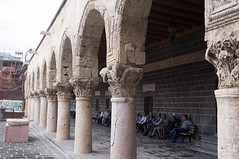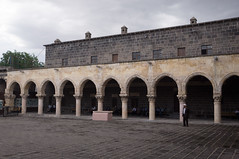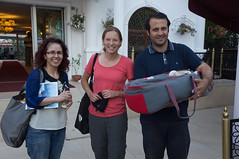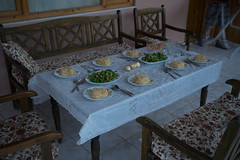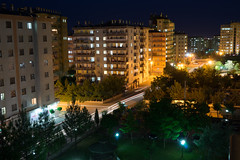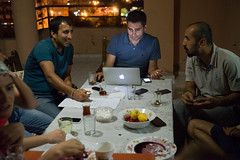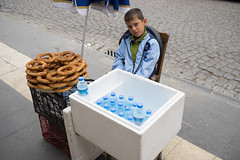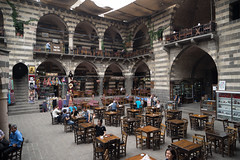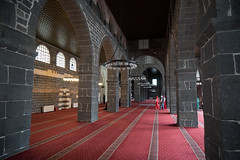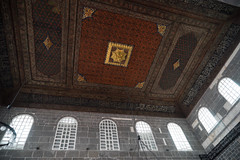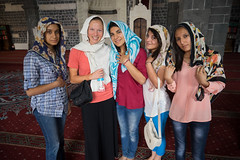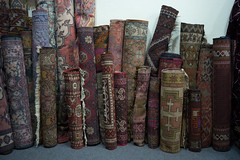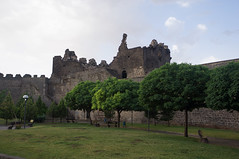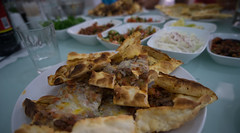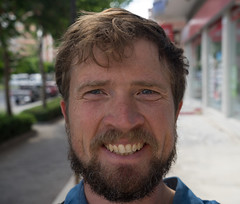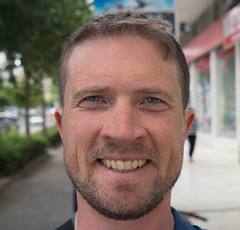Archive for the ‘Photos’ Category
A Few Days in Kazakhstan: Photos
Saturday, August 9th, 2014Train Ride from Aktau, Kazakhstan to Kungrad, Uzbekistan
Saturday, August 9th, 2014Across the Caspian: Photos
Sunday, July 27th, 2014A Comparison: Ride for Climate Asia vs. Latin America
Sunday, July 13th, 2014I’m writing from Baku, which Lindsey and I have reached after two months and 3,442 km of biking (2,136 miles). In these two months, we’ve stayed at the homes of 16 different individuals/families – of Turkish, American, Kurdish, Georgian, Dagestani, and Azerbaijani nationality. We picked up a significant amount of Turkish (which is fortunately very similar to Azerbaijani), although our Georgian and Russian (and Dagestani) are fairly limited to “hello” and “thank you.”
One question people have asked me, and one question I ask myself, is how does this journey compare to my last one, from California to Argentina – a 16,000-mile 17-month solo ride across 16 countries. The obvious difference is that I am riding with Lindsey, and that this trip is partially our honeymoon – it’s something that we’ve talked about doing together ever since our Eastern Europe trip. This trip is about bicycle adventure, and it is about climate change, but first and foremost, it is a trip Lindsey and I are taking together.
Riding across Latin America, I often found that I preferred riding alone because it was easier for people to invite me into their homes, and I met more people as a result. Riding as a couple, though, appears to make it no less difficult to meet people – and I sometimes think it makes it easier. Moreover, because we don’t speak the language here, having a partner makes communication a bit easier (we can divide up the tasks of looking up words in the dictionary – and Lindsey is better at language than I am, which makes it easier for me…).
In general, there is more diversity in this region of the world. Yes, there’s incredible diversity within Latin America, especially among the countless indigenous peoples. But the entire region (with the exception of a few small countries) is made up of Catholic, Spanish (or Portuguese, which is very similar to Spanish) speaking countries, all of which were once colonies of Spain or Portugal.
Here, in Western Asia (or far-Eastern Europe, depending on who you ask), we’ve already encountered numerous languages, including Turkish, Kurdish, Georgian, Svaneti (spoken in the mountains of Georgia), Azerbaijani, and Dagestani. Many people also try to talk to us in German, because they think we’re from Germany, or Russian, because that was the “lingua franca” of the former Soviet Union, and most older people in former Soviet Republics speak Russian. As a result, although we’ve been invited into people’s homes almost as frequently as I was in Latin America, our conversations have been very limited. Almost every family calls a friend or family member who speaks English, and hands us the phone to translate. Unfortunately, this rarely works well; the person on the phone usually doesn’t speak well enough for a good conversation. We’ve also, remarkably, had access to Google Translate in a number of situations, which works better than the friend-on-the-phone method. It has worked well enough to ask people whether they think winters are warmer or colder than they used to be. (Most say warmer.)
The diversity in language reflects diverse cultures. We biked through two Muslim countries (Turkey and Azerbaijan) and one Christian (Georgia, which was the second country to convert to Christianity, in 337 AD). Traveling in a Muslim country is very different than a Christian one – especially in villages, where all women wear headscarves, and where social norms discourage men and women from talking to each other. It was strange for us, for example, to stay with families where a man would invite us in and his wife would cook us dinner, but we would never talk to her and she wouldn’t eat with us.
We’ve also learned about the many conflicts over borders and sovereignty, and learned of forced migrations and wars we had never heard of before. The past century has been tough on the region. In the aftermath of World War I, Greeks were forcibly removed from Turkey (mostly in the west), and Armenians were violently expelled (mostly from the eastern part of the country). The nation of Armenia, with its land much reduced, went to war with neighboring Azerbaijan. Just a few years later, the USSR invaded Georgia, Azerbaijan, and Armenia, bringing a temporary end to border disputes. As the USSR collapsed, Armenia and Azerbaijan fought again, and some 800,000 or so Azerbaijanis were displaced from the disputed territory. Many Armenians were also forced to leave their homes. In Georgia, violent struggles have been fought over two provinces, with Russia effectively taking control over them. (I wanted to take a route through the mountains from Svaneti to Tbilisi, but we were unable because the road goes through the break-away province of South Ossetia, whose border is closed and which is controlled by the Russian army). There are many conflicts I’ve left out here – these are just the ones that we learned about through our conversations and reading as we traveled, and my summary here is very simplified. These histories have highlighted just how much more complicated the world is than is suggested by the lines on a map.
The outreach component of this trip is very different from my last one, partially because of the language barrier. On my last trip, I did all I could to draw attention to climate change, giving nearly 100 talks at schools and community centers. Here in Asia, we don’t speak any of the languages, making outreach much more difficult. We’re not seeking out reporters or giving as many talks. Instead, we’re focusing mostly on talking to both experts and everyday people about what climate change means for the regions we bike through. We see this as more of a learning and sharing expedition than a strict awareness-raising one.
With regards to climate change, my most important realizations from the trip through Latin America were about poverty. Staying with people in the countryside who lived at the subsistence level forced me to think about the relationship between poverty and climate change in new ways.
On this trip, in Western Asia, we’ve encountered less abject poverty than I did in Latin America. Turkey has a booming economy, and most of the time we asked ourselves about economic growth and climate change. The country is going to nearly double its electrical power production in the next ten years, and it is building infrastructure that will be there for decades. The rate of economic growth will change as we travel east to nations much poorer than those of Latin America, but for now, it is a big difference.
Climate change is also a lower priority here, it seems, than in Latin America. According to a 2010 poll by Gallup, Latin Americans are some of the most concerned about climate change of any people in the world – according to the survey, of people who had heard about climate change, more than 80 percent in most countries thought it was a serious threat to their or their family’s livelihood. Here in Turkey and the Caucasus, the figure is less than 50 percent for the countries we’ve passed through so far. And, as we’ve found from talking to environmentalists, the issue doesn’t seem to get significant attention from either environmental advocates or government agencies.
Despite this, when we have asked people if the climate is changing, the response has been more unanimous than I experienced in Latin America. Especially in Turkey, most people we’ve talked to say that it is getting warmer, and that there is less snow than there used to be.
Finally, I feel like less of an activist than when I set out from California on my original Ride for Climate. I think that is part of the inevitable process of aging. Maybe I’m less idealistic, but the world also feels more complicated, and I’m actually less sure of what I can say to make a difference. This is partially because the past five years of being a climate advocate have been extremely frustrating, from Copenhagen to the widening partisan divide on climate change in the U.S.
I also believe that the hard work of taking action on climate change begins at the local level. We aren’t going to make a big difference by simply writing about the issue on our website while traveling across far-away places, or even giving a series of presentations here or at home. Big differences are made by people who build social movements, and work for sustained amounts of time within communities and organizations – long adventures can inspire and raise some awareness, but what we need now is action and movement building.
We hope that sharing what we learn on this trip – through this blog, through videos, and through presentations when we return to the U.S. – will help encourage this action. But we also understand that it is a very small part of what needs to happen.
We will now get on a boat and cross the Caspian Sea. We have not yet seen the boat we will take, but it will be a cargo ship that should take 20 or more hours to motor across the inland sea. Then our journey will continue in the Central Asian countries of Kazakhstan, Uzbekistan, and Tajikistan.
Photos from Georgia
Sunday, July 6th, 2014Videos from Turkey
Sunday, June 29th, 2014Here are a few rough “episodes” from biking Turkey. I have put together videos for only the first part of the country — the rest of Turkey is covered in the summary video which will be available soon.
Northeast Turkey: Photos
Sunday, June 15th, 2014After our last ‘driver’ dropped us off in Erzurum, we met up with Cilem (who had waited patiently for over 6 hours since her bus arrived) and started biking towards the coast. There was a lot of up and down, notably climbing up the pass on Ovit Dagi and reaching our highest elevation yet – 2640m! It was cold up there, but beautiful, and we were rewarded with a descent all the way to sea level. On the way up, we noticed many beekeepers – the region is famous for its honey – and the way down was through a river valley with steep slopes covered in tea plantations (now we’ve seen where the endless Turkish tea comes from!), with small villages impossibly high up – we can’t figure out how people get to and from their houses. We saw tons of construction – they are widening the road and blasting tunnels through the mountains. Cyclists riding this route next year may have the choice of a 14km tunnel instead of going over the pass (choose the climb!). We also saw many run-of-the-river hydroelectric stations (HES). When we reached the Black Sea, we met one of our first cycle tourists – from Kazakhstan! – and we also saw a lot of propaganda in preparation for an upcoming visit from the prime minister, Erdogan. One of the highlights of this part of the trip was our campsites. We stayed at the top of one of the first passes, with fantastic views; the next night, we came across a small hut by the river; as we were scoping it as a potential campsite, the owner drove by – thanks to Cilem, we were able to understand that it was his place and that we were welcome to pitch our tents outside for the night. Later that night, his friends stopped by – after they overcame their surprise at our presence, we shared some snacks and conversation. We also spent one night in a tea warehouse when a local shopkeeper warned that a storm was coming in, and on our last night in Turkey we camped right next to the Black Sea on a gorgeous, cloudless night.
Hitchbiking from Hasankeyf to Erzurum: Photos
Sunday, June 15th, 2014We had planned to ride northeast from Hasankeyf before crossing into Georgia near the Armenian border. However, we decided we wanted to see the Black Sea and spend more time in Georgia, including a visit to the Great Caucasus mountains in the north. Cilem, from Diyarbakir, had some time off and was interested in the Black Sea as well. So we arranged to meet her in Erzurum, 440km from Hasankeyf (and over 1000m higher). In order to still make it to Central Asia in line with our visa dates, we needed to travel quickly, so we decided to hitchbike. We managed to cover the distance in just under 30 hours, stringing together 11 rides in everything from a public dolmus (minibus) where they threw our bikes on top, to trucks small and large, to a small SUV where the owners struggled for 15 minutes to fold the seats down so everything could fit, despite us repeatedly saying that it was OK and we could find another ride – they ended up taking us all the way to Lake Van and buying us lunch. The trip involved learning more Kurdish, an abbreviated conversation about Allah, a nice campsite in a field outside of a small village, a bit of biking – including a stretch along a beautiful valley where we suddenly came upon yet another dam under construction – and so much generosity and kindness. People would not only stop to give us rides, but climb up into truck beds to heave our bikes and panniers up, offer us food and drink, and wish us a safe journey when we parted ways. It may have been less efficient than taking a bus, but it was so much more rewarding, allowing us to meet more people and see more of the country.
Hasankeyf and Ilisu Dam: Photos
Sunday, June 15th, 2014Cilem, our host in Diyarbakir, joined us for the first part of our ride to Hasankeyf, which went through a town named Batman. Later we got our first glimpse of the Tigris River valley – the river has cut an impressive canyon, creating high cliffs on one side. We camped a few kilometers before Hasankeyf at a small campground on the river. The man who runs the campground explained how hard he’d worked to create the site, which will all be flooded in a couple of years by the Ilisu Dam. The dam isn’t bad, though, he said – the government just wasn’t offering enough for his property. Once in Hasankeyf, we heard this sentiment again, though many people are opposed to the dam, period. It will flood about 10 villages, including the ancient town of Hasankeyf, which was first settled over 10,000 years ago and is still inhabited today. We wandered around the ancient ruins and up one of the valleys behind the town, where we got a gorgeous view. The next day, I wasn’t feeling great so David hitchbiked alone to the Ilisu Dam, about 70km downstream. 3,000 people are working around the clock to complete the dam in the next 6 months, after which the reservoir will start to fill. People expect it to take about two years to reach Hasankeyf, after which only the top two meters of the minaret will be above water.
Diyarbakir: Photos
Sunday, June 15th, 2014Upon our arrival to Diyarbakir, we were treated to a delicious dinner at the home of one of the bike club members. Little did we know, the group had decided to take turns hosting us and each other every night we were in town. We ate very well! They also took us on a ride around the old city, where we had breakfast on the banks of the Tigris River, saw the huge city walls, and the 10-eyed bridge, where a dam is planned that would flood some of the area around the city. We met with an environmental group that fights dams and other ecological destruction and were interviewed for their online newspaper. We also did a bit of tourism, buying our first carpet in Turkey, and spent half a day streamlining our gear – we sent a few items home, and all of our warm clothing and 1 sleeping bag ahead to Dushanbe.








